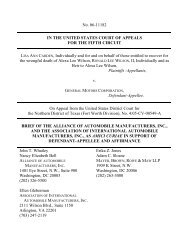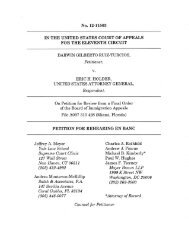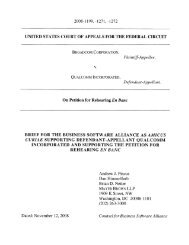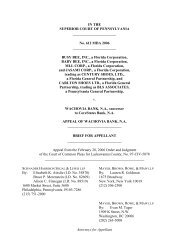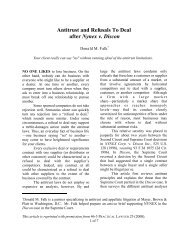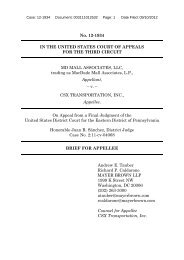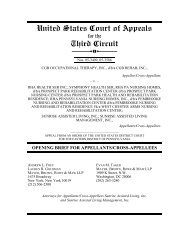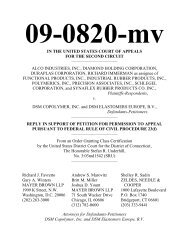No. 5-99-0830 IN THE APPELLATE COURT OF ... - Appellate.net
No. 5-99-0830 IN THE APPELLATE COURT OF ... - Appellate.net
No. 5-99-0830 IN THE APPELLATE COURT OF ... - Appellate.net
You also want an ePaper? Increase the reach of your titles
YUMPU automatically turns print PDFs into web optimized ePapers that Google loves.
The corollary of these fundamental principles is that class members who cannot<br />
prove individual injury cannot recover simply because other members of the class may have<br />
been injured. A class member is not permitted “to recover damages sustained not by him,<br />
but by someone else who happens to be a member of such class.” Windham v. American<br />
Brands, Inc., 565 F.2d 59, 66 (4th Cir. 1977); see also Kelly, 308 Ill.App.3d at 644 (where<br />
only some of the batteries Sears sold were allegedly defective, plaintiff in a purported class<br />
action had to plead and prove that the battery he himself purchased was defective). Thus,<br />
plaintiffs could not properly prevail on behalf of a nearly five million-member class by<br />
persuading a jury that “global” evidence showed that State Farm somehow breached its<br />
“contract with the class.” Instead, in order to have a class at all, plaintiffs had to be able to<br />
demonstrate through common proof which class members’ contracts were breached and what<br />
losses those particular class members actually suffered. When it became obvious that<br />
plaintiffs could not possibly meet that burden, the circuit court had an obligation to decertify<br />
the class.<br />
Meineke is directly on point. In that case, as in this one, the plaintiffs recovered an<br />
enormous judgment by “portray[ing] the class at trial as a large, unified group that suffered<br />
a uniform, collective injury.” 155 F.3d at 345. The plaintiffs in Meineke created a<br />
“composite” plaintiff by presenting their case on an aggregate basis, “litigat[ing their case]<br />
not on behalf of themselves but on behalf of a ‘perfect plaintiff’ pieced together for<br />
litigation.” Id. at 344. The Fourth Circuit reversed the judgment, holding that the trial court<br />
erred in allowing the plaintiffs to portray the class as if it were a single entity with a single<br />
contract, when it was entirely possible that the defendant had breached its contract with only<br />
-46-



